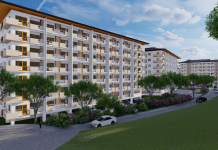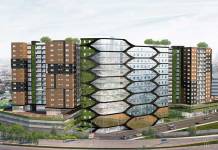
MUST READ: The establishment of the Association of South East Nations (ASEAN) as a single market (AEC 2015) by the end of December 2015 will immediately benefit the industrial sectors of member countries, with some positive spill over for the office and retail markets.
Those Philippines real estate developers and agents expecting any immediate impact on their own sector will likely be very disappointed.
In CBRE’s latest Viewpoint Research Report, ASEAN Economic Community – A Boost to South East Asia’s Real Estate Market, the firm expects an increase in demand and supply of industrial and office space in most ASEAN markets in the short- to medium-term as more small and medium enterprises (SMEs) and MNCs establish themselves in the region.
In particular, the logistics market is expected to grow and develop in ASEAN given the strong emphasis under the AEC blueprint for infrastructure development and the gradual elimination of Non-Tariff Barriers across member countries, the firm noted.
The lift in the industrial market will in turn bolster the growth in office demand too as more MNCs enter the market, and more regional SMEs expand. In particular, the financial and legal services sectors in emerging markets could grow on the back of rising infrastructure development and the proposed liberalisation of the region’s capital markets.
More foreign retailers are also projected to venture into ASEAN, building on the momentum they have charted in the last few years.
Tourism is a bright spot for ASEAN member countries as the AEC blueprint focuses on enhancing air and land transport infrastructure and regional cooperation to attract more visitors to the region.
Desmond Sim, Head, CBRE Research, Singapore and Southeast Asia, said: “While there exist hurdles and limitations that ASEAN needs to overcome, the region is still anticipated to remain an attractive proposition for businesses and commercial real estate with the implementation of the AEC serving to strengthen ASEAN’s development”.
The impediments to growth are varied. The report cites the possibility of an ill-managed institutional supply pipeline, which may result in volatility in retail rents. This could delay or even deter retailers from expanding.
The undersupply of skilled labour also poses a challenge for the office and industrial sectors in the short- to medium-term, which might in turn hamper the expansion of high-value industrial manufacturers.
The disparity in the skill sets between countries also limits the positive effects of the proposed free flow of skilled labour within ASEAN.
Another limiting factor will be the lack of complementary real estate investment policies to promote the liberalisation of investment policies and free flow of capital.
Often real estate investors are deterred by restrictions on foreign land ownership and the short duration of leases. A pro-investment environment will be required to encourage further inflow of Foreign Direct Investments and improve the overall development process in ASEAN.
Thus, according to CBRE, a review of the individual country’s land ownership policy for acquisition purposes may be necessary to allow more foreigners to participate in real estate development.
Still, market observers remain optimistic about the real estate capital inflows, going by the strong track record the ASEAN community has charted in the last decade.
Real estate investments in the ASEAN region recorded a total of US$ 28.19 billion in capital inflow between 2005 and 2014. For the last five years from 2010 to 2014, China was the top investor in the ASEAN market at 29 percent of total investment volume, which amounted to US$ 4.42 billion of Chinese capital. This was followed closely by Singapore in second position, with a value of US$ 4.26 billion, which made up 28 percent of total investment in that period.
In tandem with the increase in cross-border investments into the ASEAN market, there is a prominent shift in global capital distribution across all ASEAN countries in recent years.
Sim added: “The ASEAN Economic Community has played a key role to liberalise the investment markets in ASEAN to pave the way for foreign investments within individual member states.
“The diversity in the development of the real estate markets in ASEAN provides investors a broader investible universe for their investment strategies.
“More developed markets such as Singapore and Malaysia could offer investors a “core” or
“value-added” investment profile while “opportunistic” investments could be sourced from emerging markets such as Vietnam and Philippines.
“Investments into the ASEAN real estate market is thus expected to grow as investors seek alternative markets for their real estate portfolios,” he concluded.




















